I have four 32 x 32 rectangles that I use for my game character (collectively they are a ship and each of the rectangles represents a cell (ship compartment) that has it's own collision detection system).
I keep these cells together in a 2x2 format. Moving the 'ship' along the X and Y axes is all fine. However, when I rotate the 'ship', the individual rectangles rotate and face the correct direction, but they are no longer 'together'. That is to say, rectangle A1's right border is out of sync with rectangle A2's left border, and so on...
How do I rectify the rectangles' positions so they are still aligned after rotation? This is my first game and I'm not a maths person, thus I find myself asking for your expertise in this matter!
Many thanks in advance for your assistance. If you require more information (i.e., code) then I will provide!
UPDATE:
I finally got this working! Below is my code. I hope this helps others!
//The point we want to rotate around (in this example, I was rotating around another ship)
Vector2 origin = new Vector2(selectedShip.Position.X, selectedShip.Position.Y);
test1.Position = Vector2.Transform(test1.Position - origin, Matrix.CreateRotationZ(testRot)) + origin;
test2.Position = Vector2.Transform(test2.Position - origin, Matrix.CreateRotationZ(testRot)) + origin;
test3.Position = Vector2.Transform(test3.Position - origin, Matrix.CreateRotationZ(testRot)) + origin;
test4.Position = Vector2.Transform(test4.Position - origin, Matrix.CreateRotationZ(testRot)) + origin;
// Alter the rotation of the four ship compartments for drawing
test1.Rotation += testRot;
test2.Rotation += testRot;
test3.Rotation += testRot;
test4.Rotation += testRot;
// Update rectangle positions
test1.Rect = new Rectangle((int)test1.Position.X, (int)test1.Position.Y, ship01Texture.Width, ship01Texture.Height);
test2.Rect = new Rectangle((int)test2.Position.X, (int)test2.Position.Y, ship01Texture.Width, ship01Texture.Height);
test3.Rect = new Rectangle((int)test3.Position.X, (int)test3.Position.Y, ship01Texture.Width, ship01Texture.Height);
test4.Rect = new Rectangle((int)test4.Position.X, (int)test4.Position.Y, ship01Texture.Width, ship01Texture.Height);
theSprite.Draw(ship01Texture, test1.Rect, null, Color.White, test1.Rotation, Vector2.Zero, SpriteEffects.None, 0.0f);
theSprite.Draw(ship01Texture, test2.Rect, null, Color.White, test2.Rotation, Vector2.Zero, SpriteEffects.None, 0.0f);
theSprite.Draw(ship01Texture, test3.Rect, null, Color.White, test3.Rotation, Vector2.Zero, SpriteEffects.None, 0.0f);
theSprite.Draw(ship01Texture, test4.Rect, null, Color.White, test4.Rotation, Vector2.Zero, SpriteEffects.None, 0.0f);
Big thanks to everyone that helped!
